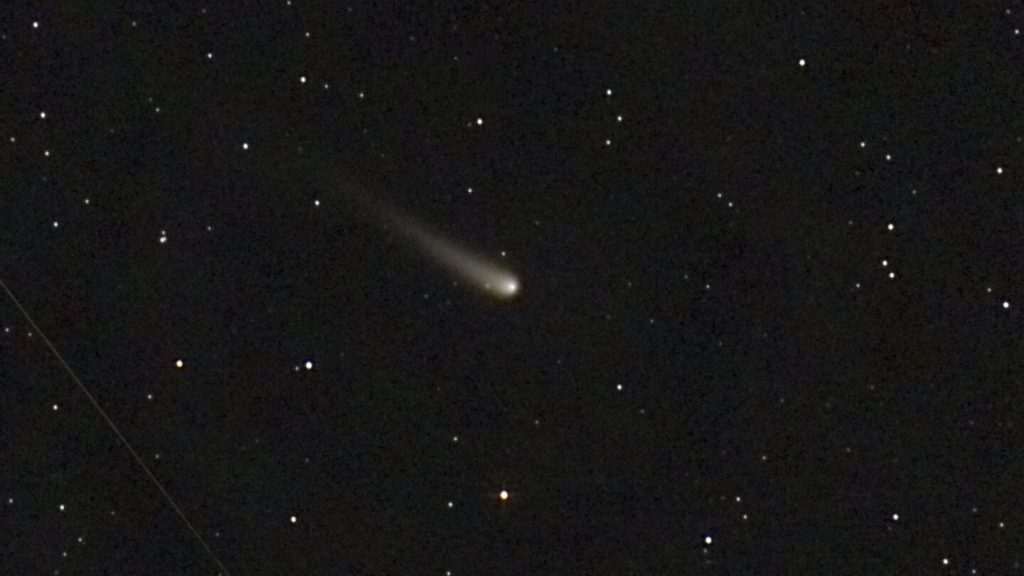A rare celestial event is occurring as comet Tsuchinshan-Atlas approaches Earth, with its closest approach scheduled for Saturday. This comet, bright enough to be seen with the naked eye, is expected to be visible through the end of October, assuming clear skies. The appearance will resemble a fuzzy circle with a long tail, as explained by Sally Brummel, a planetarium manager at the Bell Museum in Minnesota. Comets are intriguing celestial bodies, remnants from the early solar system that heat up and ignite tails as they draw nearer to the sun. In recent years, several comets have passed Earth, including the well-known green comet that made its last appearance 50,000 years ago and others such as Neowise in 2020 and Hale-Bopp and Hyakutake in the 1990s.
Discovered last year, comet Tsuchinshan-Atlas is also referred to as C/2023 A3 and derives its name from the observatories that were pivotal in its identification, located in China and South Africa. This particular comet originates from the Oort Cloud, an extensive area located well beyond the orbit of Pluto. After it makes its closest approach of approximately 44 million miles (71 million kilometers) from Earth, it will not return for another 80,000 years – provided it survives the journey through the solar system. While various comets are discovered each year, many either perish near the sun or are situated too far from Earth to be observed without specialized equipment, according to insights from Larry Denneau, who is a lead researcher associated with the Atlas telescope instrumental in the comet’s discover.
For those eager to witness this celestial phenomenon, the best viewing time for comet Tsuchinshan-Atlas is approximately an hour after sunset on nights with clear skies. Both the northern and southern hemispheres will have the opportunity to view the comet, making it accessible to a broad audience around the globe. This event provides a wonderful opportunity for amateur astronomers and casual sky-gazers alike to connect with the wonders of our solar system and appreciate the beauty of incoming comets.
Viewing comets has become an engaging pastime for many, especially with the advent of technology allowing for enhanced observation. Telescopes and binoculars can significantly improve the viewing experience, providing clearer and more defined images of the comet. The excitement surrounding such celestial events can rekindle interest in astronomy and the natural phenomena occurring beyond our planet. The unique nature of each comet’s trajectory and appearance adds to the thrill of attempting to locate them in the night sky.
Comets are not merely beautiful spectacles; they serve as crucial indicators of the history and development of our solar system. Their study can offer insights into the conditions present during the solar system’s infancy. Each comet encounter invites researchers to learn more about the materials and processes that contributed to planet formation. The appearance of new comets can also spark curiosity about potential impacts on Earth and the importance of ongoing surveillance of near-Earth objects.
As comet Tsuchinshan-Atlas continues its approach and eventual departure from our vicinity, it serves as a reminder of the dynamic nature of our solar system. The anticipation and excitement surrounding this comet reflects humanity’s enduring fascination with space and our quest to understand our universe better. Events like this not only enrich our knowledge but also inspire future generations of astronomers and space enthusiasts to look up and wonder about the cosmos above.

